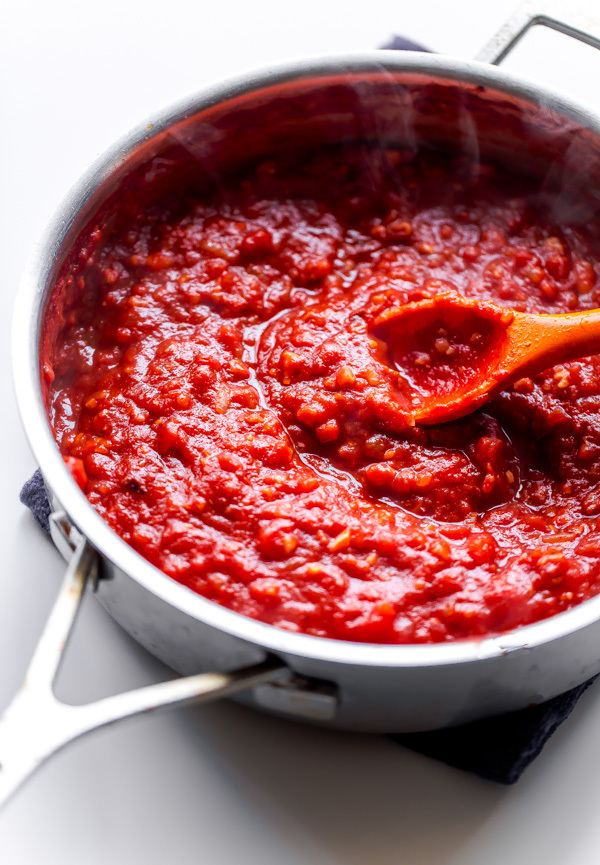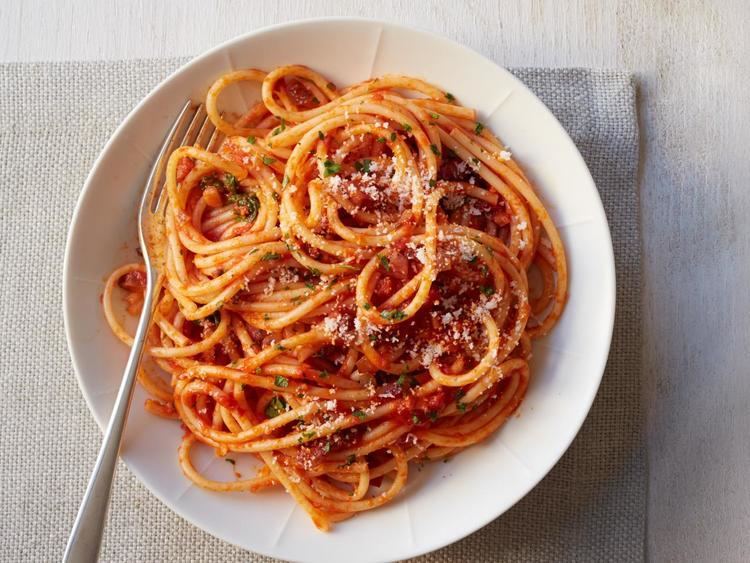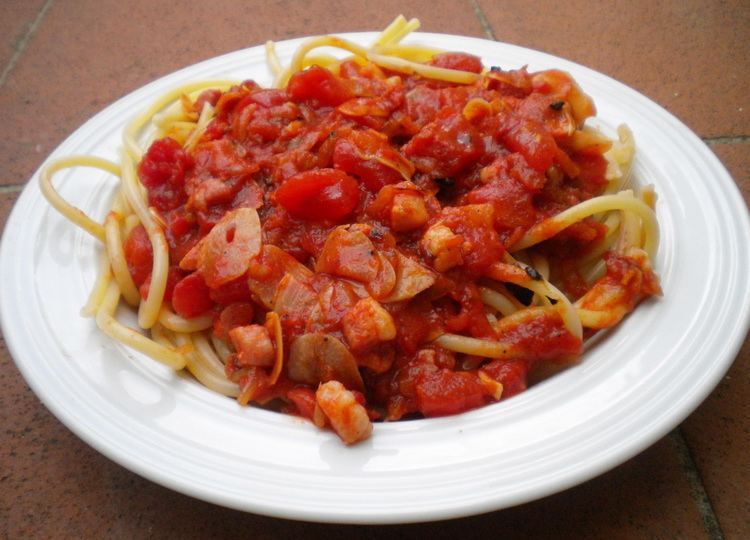Course Primo | Place of origin Italy Serving temperature Hot over pasta | |
Similar Bucatini, Tomato, Carbonara, Guanciale, Arrabbiata sauce | ||
Bucatini all amatriciana italian pasta amatriciana amatriciana sauce recipe
Sugo or salsa all'amatriciana ([ˈsuːɡo alamatriˈtʃaːna]) or alla matriciana (in Romanesco dialect) is a traditional Italian pasta sauce based on guanciale (cured pork cheek), pecorino cheese, and tomato. Originating from the town of Amatrice (in the mountainous Province of Rieti of Lazio region), the Amatriciana is one of the best known pasta sauces in Roman and Italian cuisine. The Italian government has named it a traditional agro-alimentary product of Lazio.
Contents
- Bucatini all amatriciana italian pasta amatriciana amatriciana sauce recipe
- Spaghetti with amatriciana sauce frankie celenza
- Development
- Variants
- References
Spaghetti with amatriciana sauce frankie celenza
Development

Amatriciana originates from a recipe named gricia. Grici were what Romans—modern dwellers of Rome, not the ancient ones—called the sellers of bread and comestibles. They were so called in that a number of them emigrated from the Swiss canton of Grisons. According to another hypothesis, the name originates from the hamlet of Grisciano, in the comune of Accumoli, near Amatrice. The sauce was (and still is) prepared with guanciale (cured pork cheek) and grated pecorino. According to the matching hypothesis, ingredients reflect local products available either to a simple grocery store or to common folk who practiced herding in the mountainous area. At some point, a little olive oil was added to the recipe; also it should be noted that in the 1960s the Amatriciana sauce was still prepared in this way in Amatrice itself.

The invention of the first tomato sauces (and the terminus post quem for the introduction of tomato in the gricia, creating the Amatriciana) dates back to the late 18th century. The first written record of pasta with tomato sauce can be found in the 1790 cookbook L'Apicio Moderno by Roman chef Francesco Leonardi.

The Amatriciana recipe became increasingly famous in Rome over the 19th and early 20th centuries due to the pluricentennial connection between Rome and Amatrice. The recipe was extremely well received and rapidly went on to be considered a "classic" of the Roman Cuisine, even though it originated elsewhere. The name of the dish in the Romanesco dialect eventually became matriciana due to the apheresis typical of this dialect.

While tomato-less gricia is still prepared in central Italy, it is the tomato-enriched amatriciana that is better known throughout Italy and exported everywhere. While in Amatrice the dish is prepared with spaghetti, the use of bucatini has become extremely common in Rome and is now prevalent. Other types of dry pasta (particularly rigatoni) are also used, whereas fresh pasta is generally avoided.
Variants
The recipe is known in several variants depending, among other things, on the local availability of certain ingredients. While everybody seems to agree about the use of guanciale and tomato, onion is not favored in Amatrice, but is shown in the classical handbooks of Roman cuisine. For frying, olive oil is most commonly used, but strutto (canned pork lard) is used as well.
The addition of garlic sauteed in olive oil, before adding the guanciale is also accepted, and for cheese either pecorino romano or Amatrice's pecorino (from the Monti Sibillini or Monti della Laga areas) can be used. The addition of black or chili pepper is common.
